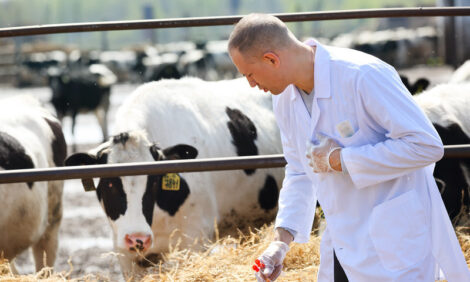



New Pasture Hope for Saltland Grazing
Melilotus Siculus, a cultivar of Messina offers grazing productivity increases on saline or waterlogged pastures and is set to be commercially available in 2015 thanks to work by the South Australian Research and Development Institute (SARDI).A single messina (Melilotus siculus) cultivar will be identified for limited commercial release by 2015 after extensive trials of this novel annual Mediterranean pasture legume by the South Australian Research and Development Institute (SARDI) and Department of Agriculture and Food Western Australia (DAFWA).
It will be the first commercially available messina, not only in Australia but internationally, after extensive field and laboratory research funded by the Australian Government’s Future Farm Industries Cooperative Research Centre.
“We are very excited about the potential of messina to greatly increase the productivity of current saltland pastures,” said SARDI senior research officer Amanda Bonython.
In SA’s Upper South East, for example, this land tends to be based on the salt-tolerant grasses puccinellia and tall wheat grass.
“By incorporating a legume into the saltland mix, messina has the capacity to increase soil nitrogen levels and soil carbon, resulting in increased pasture productivity and therefore an increase in potential livestock carrying capacity,” Ms Bonython said.
“Messina’s combined tolerance to salinity and waterlogging surpasses that of all commercial legumes and ensures it will make a significant contribution to increasing the productivity of saltland,” she said.

The research will identify the best cultivar from a total of 21 lines of messina sown at three field trial sites near Keith in the Upper South East and at other sites in southern WA.
The messina lines were tested for seasonal dry matter production, seed yield, regeneration, maturity, and feeding nutritive value.
Areas affected by dryland salinity tend to also experience waterlogging and inundation. In 2000, 5.7 million hectares of Australia’s agricultural land was affected by dryland salinity, with about 270,000 ha located in the Upper South East.
Over time, messina has the potential to improve large areas of this saltland.
“Third-year dry matter results indicate messina’s greatest contribution will occur where salinity levels are too high for balansa clover and burr medic and where inundation is a limitation for burr medic and sweet clover,” Ms Bonython said.
In another assessment, the total dry matter for a messina stand, including companion salt-tolerant grasses, was 6500 kg/ha, which was four times more productive than the ‘over-the-fence’ grass pasture dry matter of 1600 kg/ha.”
The pasture research team based at Struan Research Centre near Naracoorte and SARDI researchers at Waite Campus in Adelaide – in conjunction with DAFWA researchers – have also identified a new strain of rhizobia to support messina on winter-wet saltlands.

This will be critical to the success of the new legume.
The new strain of rhizobia was selected from more than 100 strains following glasshouse tests and extensive field testing in SA and WA.
An important characteristic of the new rhizobia, which will be released at the same time as the new messina cultivar, is its ability to persist in the hostile saltland soils. This enables abundant nodulation and nitrogen fixation in regenerating messina pastures.
Follow-up research includes development of an agronomic package for messina and further work on grazing benefits.
The Future Farm Industries CRC has also funded research on developing an acid-tolerant lucerne rhizobium to enable the perennial plant to grow in more acidic soils.
SARDI researchers also have identified a new strain for superior acid tolerance and the rhizobia is expected to be released commercially across eastern Australia in time for sowing lucerne in 2014.
May 2013


